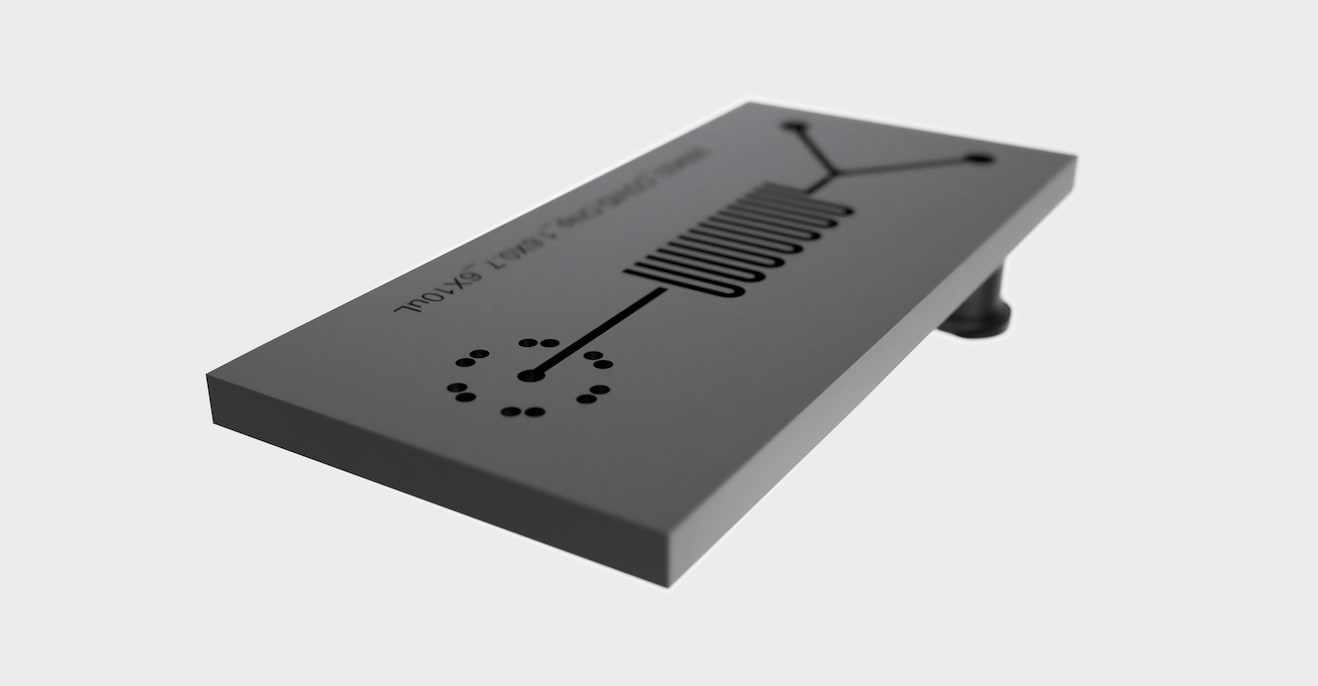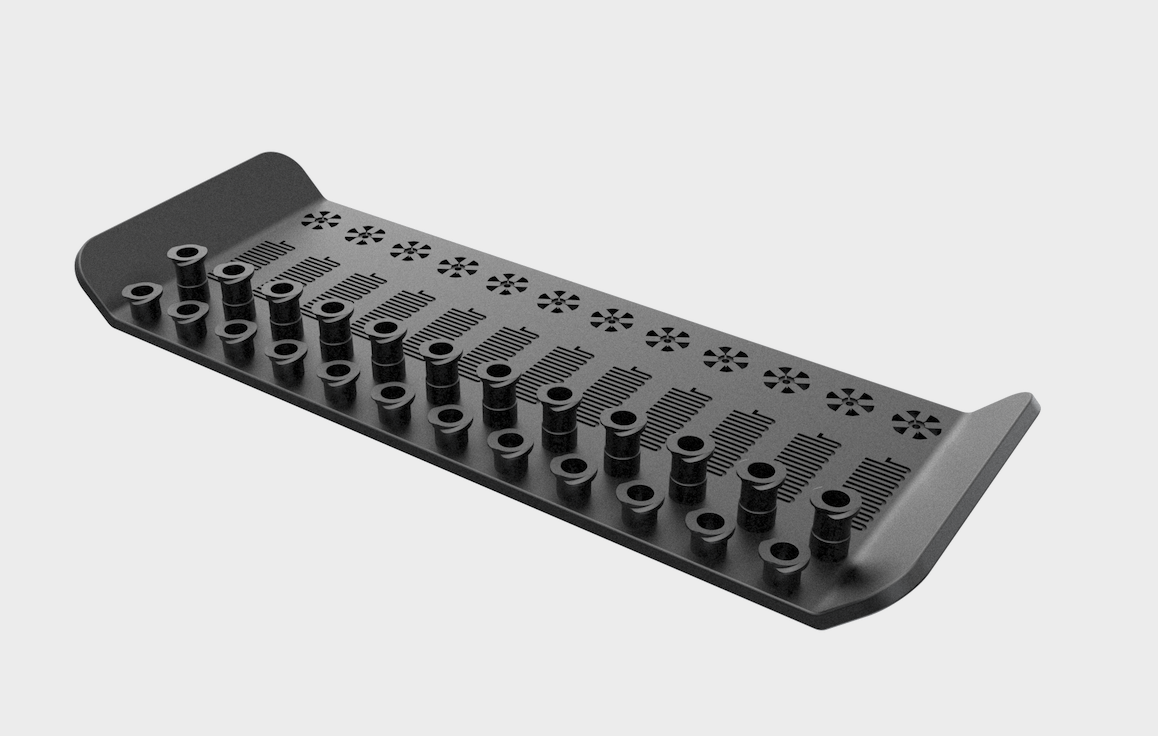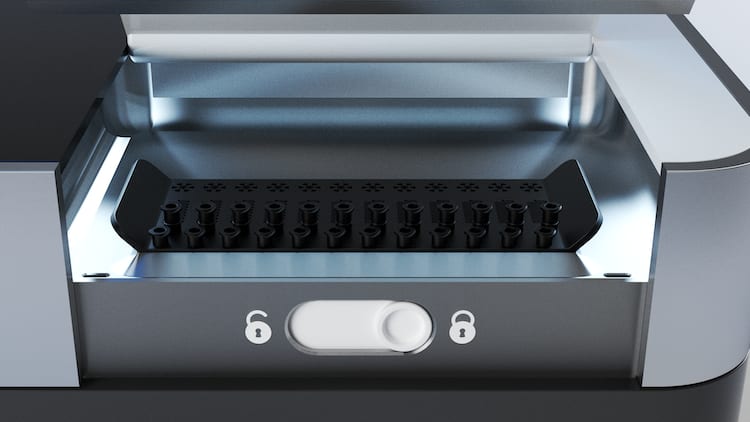The University of Illinois Develops Faster, More Efficient Point-of-Care Diagnostics With SyBridge Using Carbon
KEY TAKEAWAYS:
- SyBridge went from idea to working diagnostic in 5 weeks
- Tested 10 designs over four 24-hour design, test, and print cycles using RPU 70 material
- New prototype design using the Carbon DLS process is 2x smaller than the previous 2D version, increasing portability
To meet the demand for point-of-care (POC) COVID-19 testing, a team from SyBridge and the University of Illinois used the Carbon Digital Light Synthesis™ (Carbon DLS™) process to create a validated, design-patented prototype of a microfluidic diagnostic in a matter of weeks, saving years of development time compared to traditionally manufactured biomedical diagnostics.
“The Carbon DLS™ process allowed us to make significant progress with microfluidic diagnostics very quickly to address the need for POC testing. We designed these devices with 3D geometries that cannot be made with other manufacturing processes, using production-ready materials. Our microfluidic cartridge is ready for production after only five weeks of development.”Dr. Bill KingChief Scientist, SyBridge
Compressing a Years-Long Product Development Cycle into Weeks
Efficient, accurate, and accessible COVID-19 testing is critical to identifying cases and informing strategies for reopening businesses and public spaces across the United States. However, hospitals and lab facilities often lack sufficient scale-up capacity to handle an increasing quantity of tests.
To fill the gap, companies are scrambling to produce fast, accurate, POC diagnostics that don’t need to be processed by skilled technicians. While microfluidic “lab on a chip” technology seems like a good candidate for portable, easy-to-use POC COVID-19 testing, these diagnostics usually take many years to develop. Moreover, microfluidic cartridges are typically prohibitively difficult and costly to manufacture.
Two years before the pandemic, researchers at SyBridge and the University of Illinois realized that making microfluidic cartridges with additive manufacturing could dramatically accelerate diagnostics R&D and also save time and money in production. Once the coronavirus pandemic hit, the team quickly shifted focus to COVID-19 testing, producing a functional lab test in just five weeks.
Fast, Flexible Product Development
SyBridge has the advanced technology and materials expertise needed to make sensitive medical diagnostics. The manufacturing partner was able to carefully control the manufacturing process using the Carbon DLS™ process to achieve the high resolution and tolerances required for microfluidic devices. Further, the devices were made with Carbon RPU 70 material, a polyurethane that has the chemical stability necessary to conduct diagnostic chemistry with precision.


Figure 1 and 2: New microfluidic diagnostic created using the Carbon DLS process and RPU 70
SyBridge designed the microfluidic cartridge so that the patient test sample and other chemical reagents can be loaded onto the device more easily than other cartridges on the market. Injection molding only allows for mixing channels to sit on the surface of the cartridge, but the new design created using the Carbon DLS process enabled the addition of an internal serpentine channel that allows fluid to move from the front to the back of the chip, resulting in better mixing performance than a 2D serpentine chip. The new design—created for COVID-19 detection and adaptable for other tests as well—is also less than half the size of the previous version, allowing for increased portability and easier testing outside of labs.
Figure 3: The addition of an internal serpentine channel, made possible by the Carbon DLS process, allows fluid to move from the front to the back of the chip, resulting in better mixing performance than a 2D serpentine chip, and at less than half the size
Microfluidic diagnostics devices can take years to get to market because manufacturing the intricate cartridges is a painstaking process. The patented and additively manufactured microfluidic device from SyBridge was designed and validated in only five weeks. Engineers worked to design, print, and test approximately 10 iterations of the diagnostic in four 24-hour cycles with no need for costly tooling.
Making Point-of-Care Diagnostics Possible
Unlike a traditionally manufactured microfluidic cartridge, the test device SyBridge manufactured can go into production with no further changes to its materials or design. Making a diagnostic with the Carbon DLS process doesn’t require the steep upfront expenditure for micro-injection molding tooling, which could save companies millions of dollars.

Figure 4: Parts created using the Carbon DLS process are production-ready, saving companies time and money
Learn more about RPU 70, the material that SyBridge used, in this Ask an Additive Expert episode.
